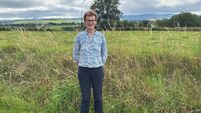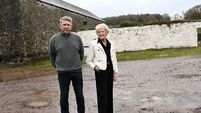Put safety at the centre of your farmyard

Teagasc is putting a strong focus on safe farmyard design during Farm Safety Week which continues until Friday, July 25.
Farmyards must be functional for livestock and crop enterprises, but they must also facilitate safe, efficient movement of people, livestock and machinery. Clear separation of people, livestock and machinery must be in place throughout the farmyard to safely manage farm tasks. Pedestrian routes must avoid contact with livestock and machinery.
Francis Bligh, Teagasc health and safety specialist, said: “Good facilities have a direct positive impact on safety and efficient management of the farm. I would strongly encourage farmers to plan ahead and to talk to their advisors about their ideas for their farmyard, and also to explore possible sources of government funding to assist with the cost of works.”
He explained regular risk assessments are a good place to start, and will help to identify potential high-risk areas and activities. Work can then be carried out to eliminate or reduce these risks. Good communication among everyone working on the farm will help encourage open conversations about risks to ensure they are identified and resolved.
The farmyard can be close to the farm household. It is important that there is a clear separation of domestic and work activities. A designated, safe play area for children must be in place away from machinery, livestock and hazards like slurry tanks and farm chemicals.
The farmyard should be designed to keep activities segregated in defined, well-managed locations.
Some examples of this:
- Farm chemicals and crop spraying equipment in a defined area with storage and washdown facilities;
- Workshop/machine maintenance area with space to store tools and parts in a tidy fashion;
- Farm oils and lubricants should be kept together in designated storage tanks;
- Machinery stored on hard surface, ideally covered, away from animals and crops;
- Livestock housing and handling equipment kept together and appropriate to the type of livestock, and separate from crops and machinery.
Farm buildings and yards must be adequately lit. Electrical circuits must be assessed regularly by a qualified electrician.
Ground conditions must seek to avoid slips, trips and falls. Yards should have hard surfaces free of water and mud. They must be cleaned regularly. Steep slopes should be avoided.
Warning signs must be in place at the entrance to the farm to highlight high-risk areas. Hazardous areas within the farm must also have clear signage. Some examples include a bull pen, calving area, chemical storage, workshop area, electrical cables and slurry tanks.
Keep a fully stocked first aid box in an easily accessible area in the farmyard. Make sure it is visible and everyone on the farm knows where it is.
Good farm buildings and yards help to ensure costly nutrients are being carefully collected and managed to best effect. This has a positive impact on the peace of mind of the farmer as it helps to reduce worries associated with compliance with legislation linked to the environment.
Farm construction work is covered by Safety, Health and Welfare at Work (Construction) Regulations. A farmer needs to make construction appointments before starting construction work.













